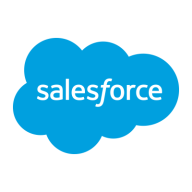

Salesforce Platform and Azure Red Hat OpenShift are competitive platforms for developers in the cloud solutions category. Salesforce has the upper hand in pricing and support, while Azure Red Hat OpenShift leads in feature comprehensiveness.
Features: Salesforce Platform offers robust CRM capabilities, seamless integration with various applications, and strong analytics tools. Azure Red Hat OpenShift stands out with powerful container management, scalability for DevOps projects, and excellent cross-platform functionality.
Room for Improvement: Salesforce could enhance its development and infrastructure flexibility. Salesforce’s initial setup could be streamlined for higher complexity deployments. Improvements in advanced container management would strengthen Salesforce's appeal in technical use cases. Azure Red Hat OpenShift could improve price competitiveness, simplify its complex initial setup, and enhance direct CRM functionalities to broaden its appeal.
Ease of Deployment and Customer Service: Salesforce Platform ensures simplified deployment and offers strong customer support, facilitating rapid CRM project initiation. Azure Red Hat OpenShift entails a more complex initial setup due to sophisticated containerization features, but it provides extensive resources for guidance and customer support, appealing to more technically inclined users.
Pricing and ROI: Salesforce typically involves lower setup costs while delivering high returns through CRM efficiency. Azure Red Hat OpenShift may require significant initial investments, but it is justified by its long-term benefits in streamlining development processes and supporting robust infrastructure.


Azure Red Hat OpenShift provides highly available, fully managed OpenShift clusters on demand, monitored and operated jointly by Microsoft and Red Hat. Kubernetes is at the core of Red Hat OpenShift. OpenShift brings added-value features to complement Kubernetes, making it a turnkey container platform as a service (PaaS) with a significantly improved developer and operator experience.
Salesforce Platform is a tool that provides application building with open application programming interfaces (APIs), integration tools, back-end services, starter templates, and developer environments. With a low-code interface, users are able to build applications and benefit from automated processes. The product helps customers to increase work productivity and save on IT costs through efficient, easy-to-understand, methods for creating applications.
Salesforce Platform allows companies to build and operate intelligent applications at scale and share them with employees and customers in real time. The tool secures companies' data while connecting and synchronizing it simultaneously across their Customer 360 accounts. The main components of the product are:
Salesforce Platform Features
Also referred to as a “drag and drop app builder," this solution offers various features for customers to create intelligent applications and build personalized services for clients, partners, and employees within the apps.
Salesforce Platform Benefits
The benefits of using Salesforce Platform include:
Reviews from Real Users
A vice president at a healthcare company values Salesforce Platform because it is flexible and user-friendly with helpful pre-built schemas.
Peter G., a senior technical consultant at a tech services company, rates Salesforce Platform highly because it is intuitive, quite easy to learn, and stores all kinds of relevant sales information.
We monitor all PaaS Clouds reviews to prevent fraudulent reviews and keep review quality high. We do not post reviews by company employees or direct competitors. We validate each review for authenticity via cross-reference with LinkedIn, and personal follow-up with the reviewer when necessary.